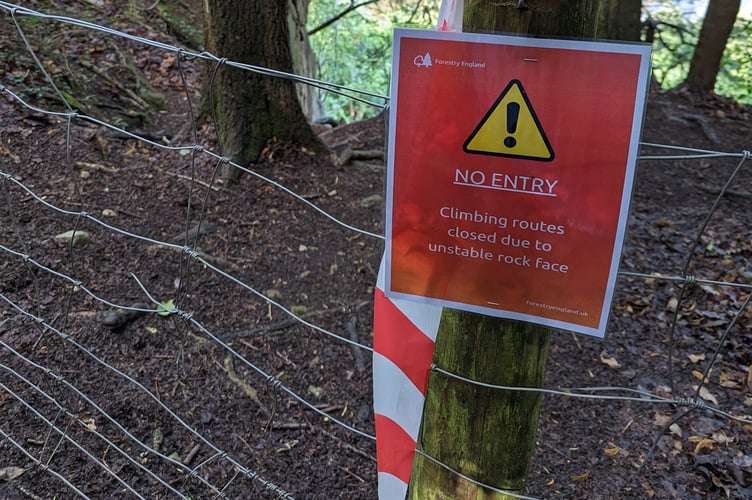A PUBLIC right of way and rock climbing routes at Symonds Yat will remain closed for the foreseeable future after 20 tonnes of rock fell from a cliff and wiped out a protective fence.
Forestry England (FE) says a “major rockfall” occurred at Symonds Yat Rock at the site of known rock climbing routes, known as Hollow Rock, on August 8.
The size of the fall was “enough to take out” a rock capture fence put in place for such incidents, FE said, and therefore all climbing routes in the area and the public right of way down to the river were closed immediately.
Users commenting on FE’s Facebook post about the closure suggested the fall was likely caused by the growth of a tree “levering” the rock apart.
FE had previously said it may be possible to reopen some of the adjacent climbing routes, and were liaising with the British Mountaineering Council (BMC) about this.
But last week, after consulting with experts, FE said they had taken the decision to keep the closure - including of other climbing routes in the area - in place “for the foreseeable future” due to concerns about other parts of the cliff.
A statement said: “An estimated 20 tonnes of rock fell from the cliff face, and had it not been for the rock capture fence, the damage below could have been significant.
“We have been asked why we can’t reopen some of the climbing routes away from the location of the rockfall.
“Preliminary advice shows there may be further areas of concern in the area.
“We don’t know whether another rockfall will happen somewhere else along the cliff face – and without a fence in place, we can’t take this risk.
“Our next steps will be to carry out a full survey/assessment of the whole of the cliff face, and to get the fence repaired or replaced.
“We will keep you updated. In the meantime, we thank you for your continued patience and cooperation.”
A diversion has been put in place for walkers from Symonds Yat Rock down to the River Wye.
One Facebook user commented that FE were wrongly suggesting that climbers had somehow contrubted to the instability of the cliff, when tree growth was the probable cause of the rockfall.
They also said the climbers had been contributing to the care of the site for “a number of years”, in an area that is “regionally if not nationally important” to the climbing community.
But an FE spokesperson confirmed the rockfall was “a natural incident”, and clarified: “we are not saying this was caused by climbers.”
But they said: “As the landowner we have a duty of care, not only to climbers but to other visitors and the properties below the cliff face.”
“We are asking climbers to avoid the area until we can carry out a full survey and get the rock capture fence repaired”, they added.





Comments
This article has no comments yet. Be the first to leave a comment.